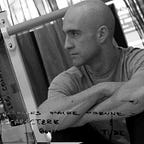Pain, injury and achiness can suck all the joy out of training, and daily life.
What I describe here is one of the most broadly applicable and powerful techniques I’ve discovered over the decades to reduce the pain and recover joy in movement.
This approach is quite different from the various exercise and equipment based solutions you will get from most physios or fitness experts. These have their value too, but especially if the pain you experience is chronic I expect you will find this method both flexible and helpful.
While the technique might seem a little new age on the surface it uses many components of modern pain science.
This article will start with a very short summary of the science that backs the method up, continue with the method itself and finish with some of the positive side effects that you may also experience.
Subjectively we tend to experience pain as a set of very specific sensations located in the physical space of the body. However the science of pain describes a different process.
The science demonstrates that pain is created by the brain, in the brain. That is not to say pain is unrelated to what is going on elsewhere in the body, but there are no hardwired pain circuits to create specific sensations when a bone…
